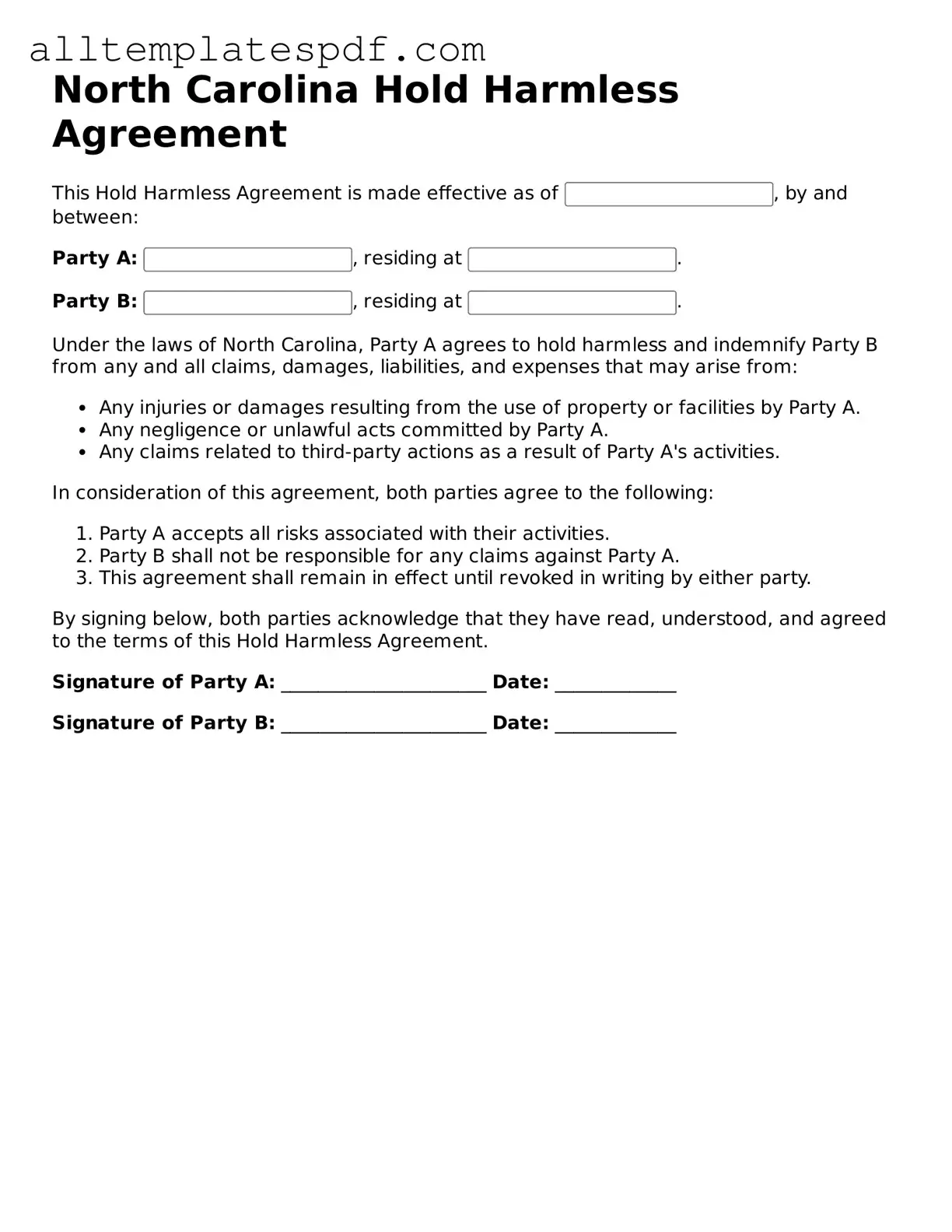Filling out the North Carolina Hold Harmless Agreement form can be straightforward, but mistakes often occur. One common error is not providing complete information. When individuals leave out important details, it can lead to confusion or disputes later on. Always ensure that every section of the form is filled out accurately.
Another mistake is failing to read the entire document before signing. Some people may skim through the agreement, missing key clauses or terms. Understanding what you are agreeing to is crucial. Take the time to read through the entire form carefully.
Inaccurate dates can also create problems. If the date of signing is incorrect, it may affect the validity of the agreement. Always double-check the date you enter to ensure it reflects when you actually signed the document.
Some individuals neglect to include their signatures. A Hold Harmless Agreement is not valid without the necessary signatures. Make sure to sign in the designated area and, if required, have any witnesses sign as well.
Another frequent mistake is misunderstanding the scope of the agreement. People might not realize what liabilities they are agreeing to hold harmless. Clarifying the terms can prevent future misunderstandings. If anything is unclear, consider asking for clarification before signing.
Not providing the correct names of the parties involved is another issue. Using nicknames or abbreviations can lead to legal complications. Always use the full legal names of all parties to ensure clarity and enforceability.
Some individuals forget to include any necessary attachments or additional documents. If the agreement references other documents, make sure those are included. Omitting these can lead to incomplete agreements that may not hold up in court.
Another mistake is failing to keep a copy of the signed agreement. After signing, it is important to retain a copy for personal records. This ensures that all parties have access to the terms of the agreement in the future.
Lastly, people often overlook the importance of consulting with a legal professional. While the form may seem simple, having a legal expert review it can help avoid potential pitfalls. Seeking advice can provide peace of mind and ensure that the agreement meets all legal requirements.
